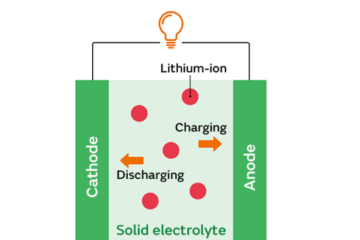Nanoplastics: Unseen Threats in Our Environment

In the hidden lands of plastic pollution lies a microscopic threat – nanoplastics. This comprehensive article dives into the unseen threats nanoplastics pose, exploring their sources, impacts on ecosystems, and potential risks to human health. Let’s unravel the intricate web of nanoplastic pollution, navigating through research insights, emerging concerns, and the urgent need for collective action. Brace yourself for an eye-opening exploration of a largely unnoticed environmental menace that demands immediate attention.
What are Nanoplastics?
Nanoplastics represent a microscopic and often overlooked facet of plastic pollution, characterized by particles with dimensions less than 100 nanometers. Despite their minuscule size, nanoplastics pose significant environmental and health risks.
Sources of Nanoplastics
- Microplastic Breakdown: Larger plastic items degrade into nanoplastics over time due to environmental forces like weathering and sunlight. This breakdown process releases nanoplastics into water, soil, and air.
- Textile Fibers: Synthetic fabrics, especially during washing, shed microscopic fibers that enter wastewater. These textile-derived nanoplastics ultimately reach aquatic environments.
- Cosmetic and Personal Care Products: Certain products, historically containing microbeads, release nanoplastics as they break down. These particles find their way into water sources, impacting aquatic ecosystems.
- Plastic Packaging and Films: Everyday activities involving plastic packaging contribute to the release of nanoplastics. The degradation of plastic materials results in the production of these tiny particles.
- Waste Disposal and Landfills: Landfills, where plastic waste accumulates, release nanoplastics as macro- and microplastics degrade. Landfill leachate carries nanoplastics into nearby water bodies.
Nanoplastics in Ecosystems
Nanoplastics, minuscule fragments resulting from the relentless degradation of larger plastic materials, have silently permeated ecosystems worldwide. These imperceptible intruders, invisible to the naked eye, weave themselves into the intricate tapestry of natural environments, leaving an indelible mark. From the depths of aquatic realms to the terrestrial embrace of soils, and even suspended in the air we breathe, nanoplastics have become ubiquitous inhabitants of our shared ecosystems.
In aquatic ecosystems, nanoplastics infiltrate water bodies through multiple avenues, stemming from the runoff of land-based sources and the gradual breakdown of larger plastic entities. The consequences of this infiltration extend beyond the visible, impacting the delicate balance of aquatic life. Phytoplankton, fish, and other organisms unknowingly become hosts to these microscopic particles, disrupting feeding habits and potentially altering the fundamental dynamics of the ecosystem.
Nanoplastics venture into soils on land, where agricultural practices and atmospheric deposition play pivotal roles in their introduction. The repercussions unfold as nanoplastics intertwine with the soil’s intricate web of life. Microbial communities face alteration, nutrient cycles may be disturbed, and plants interact with these minute invaders in ways yet to be fully understood.
Even the air we breathe carries whispers of nanoplastics. Generated through the degradation of plastic products and their subsequent resuspension into the atmosphere, airborne nanoplastics introduce a new dimension of concern. Respiratory exposure becomes a potential risk for humans and animals, raising questions about the implications for respiratory health.
Bioaccumulation emerges as a central theme in the nanoplastic narrative as these microscopic entities traverse the food chain. From primary producers to top predators, nanoplastics leave an imprint, accumulating in the tissues of organisms across trophic levels. The long-term consequences of this bioaccumulation remain uncertain, casting shadows over the resilience of individual species and the stability of entire ecosystems.
Nanoparticles for Human and Animal Health Concerns
Nanoparticles, including nanoplastics, raise health concerns for both humans and other animals due to their ability to enter biological systems and potentially induce various adverse effects. Here are some key considerations regarding the health concerns associated with nanoparticle exposure:
Inhalation and Respiratory Concerns
Nanoparticles can become airborne, posing inhalation risks for humans and animals. Once inhaled, nanoparticles may reach the respiratory system, potentially leading to inflammation and respiratory disorders.
Ingestion and Gastrointestinal Effects
Humans and animals can ingest nanoplastics in water and food sources. In the gastrointestinal tract, nanoparticles may interact with tissues, potentially causing inflammation, oxidative stress, and other adverse effects.
Bioaccumulation
Nanoparticles, including nanoplastics, have the potential to bioaccumulate in living organisms as they move up the food chain. Higher trophic level organisms may experience greater concentrations of nanoparticles, leading to increased health risks.
Cellular and Molecular Interactions
Nanoparticles can enter cells and interact with cellular structures, potentially disrupting normal cellular functions. The small size of nanoparticles allows them to penetrate cell membranes, raising concerns about cellular toxicity and long-term health effects.
Inflammatory Responses
Exposure to nanoparticles may trigger inflammatory responses in tissues and organs. Chronic inflammation is associated with various health conditions, and prolonged nanoparticle exposure could contribute to developing inflammatory diseases.
Oxidative Stress
Nanoparticles may induce oxidative stress, causing an imbalance between reactive oxygen species (ROS) and antioxidants. Oxidative stress is linked to cellular damage and is implicated in the developing of several diseases.
Genotoxicity and DNA Damage
Some studies suggest that certain nanoparticles may exhibit genotoxic effects, potentially causing DNA damage. Genotoxicity raises concerns about the potential for nanoparticle-induced mutations and long-term health consequences.
Immunological Responses
Nanoparticles can modulate immune responses, affecting the body’s ability to defend against infections and diseases. Immunomodulation may lead to increased susceptibility to illnesses and compromise overall health.
Translocation to Organs
Nanoparticles can translocate from the site of exposure to various organs in the body. This translocation may lead to organ accumulation, potentially causing localized effects and contributing to overall health risks.
Neurotoxicity
Some nanoparticles have been implicated in neurotoxic effects, affecting the central nervous system. Neurotoxicity raises concerns about potential impacts on cognitive function and neurological health.
It’s important to note that research in nanoparticle toxicity is ongoing, and the understanding of health effects is continually evolving. The potential risks associated with nanoparticle exposure highlight the need for comprehensive studies to assess the specific impacts of different types of nanoparticles, including nanoplastics, on both human and environmental health.
Measuring and Detecting Nanoplastics
Analytical Challenges: The minute size and diverse forms of nanoplastics pose significant challenges in detection. Traditional methods struggle to accurately measure nanoparticle concentrations due to limitations in resolution and sensitivity. Researchers are exploring advanced techniques, such as electron microscopy and spectroscopy, to overcome these analytical challenges.
Advanced Detection Technologies: Emerging technologies, including hyperspectral imaging and nanoparticle tracking analysis (NTA), show promise in enhancing nanoplastic detection capabilities. These methods enable researchers to identify and quantify nanoplastics in various environmental matrices precisely. Continued innovation in detection technologies is crucial for staying ahead of the complexity of nanoplastic pollution.
Current Research Methods: Current research utilizes spectroscopic, microscopic, and chromatographic techniques to analyze nanoplastic samples. Fourier-transform infrared (FTIR) spectroscopy and Raman spectroscopy are commonly employed for their ability to characterize nanoplastic particles. Microscopy techniques, such as transmission electron microscopy (TEM) and scanning electron microscopy (SEM), provide insights into nanoplastic morphology.
Regulatory Landscape
Current Regulations on Plastics: Existing regulations predominantly focus on larger plastic items, with limited attention given to nanoplastics. Regulatory frameworks vary globally, and many jurisdictions lack specific guidelines for monitoring and controlling nanoplastic pollution. The inadequacy of current regulations highlights the need for comprehensive and updated measures.
Gaps in Nanoplastics Regulation: The regulatory landscape is characterized by notable gaps in addressing nanoplastic pollution. Challenges include defining standardized methods for nanoplastic detection, establishing permissible limits, and developing strategies for regulating nanoplastic-containing products. Bridging these gaps is crucial to address the pervasive issue of nanoplastic contamination effectively.
Global Initiatives and Policies: International initiatives, such as the United Nations Environment Programme (UNEP) and the European Union’s Plastics Strategy, aim to address plastic pollution. While these efforts recognize the broader issue of plastic waste, specific attention to nanoplastics is limited. Collaborative global policies and frameworks are essential to create a unified front against nanoplastic pollution.
Mitigation Strategies
Preventing Nanoplastic Formation: Preventive measures are pivotal in mitigating nanoplastic pollution. These include developing alternative materials, eco-friendly packaging, and sustainable waste management practices. By reducing conventional plastics, the generation of nanoplastics can be curtailed at the source.
Innovations in Plastic Waste Management: Innovative approaches to plastic waste management, such as advanced recycling technologies and circular economy practices, offer potential solutions. Adopting closed-loop systems and promoting the circularity of plastic materials can minimize the release of nanoplastics into the environment.
Policy Recommendations: Effective policies play a central role in mitigating nanoplastic pollution. Recommendations include incorporating nanoplastic-specific regulations, setting standards for releasing nanoplastic-containing products, and fostering collaborations between regulatory bodies, industries, and research institutions.
Future Research Directions
Unexplored Aspects of Nanoplastic Pollution: Future research should delve into unexplored aspects of nanoplastic pollution, including the interactions between nanoplastics and different environmental matrices, the identification of novel sources, and the assessment of long-term ecological impacts. Understanding the full scope of nanoplastic contamination requires interdisciplinary investigations.
Interdisciplinary Research Needs: Interdisciplinary collaboration is crucial for advancing nanoplastic research. Engaging scientists, engineers, environmentalists, and policymakers in collaborative efforts can lead to holistic insights into nanoplastic behavior, fate, and impacts across diverse ecosystems.
Technological Innovations for Nanoplastics Study: Anticipating technological advancements is essential for progressing nanoplastic research. Continued innovation in detection methods, monitoring technologies, and experimental approaches will enable researchers to unravel the complexities of nanoplastic pollution and develop effective mitigation strategies.
Conclusion
Nanoplastics quietly affect our world, entering water, soil, and even the air. Research is figuring out how these tiny particles impact ecosystems. Preventing and cleaning up nanoplastics are crucial; real-life stories show their effects. The future of research involves understanding how nanoplastics connect everything in our environment. To solve this, scientists, leaders, and communities need to work together. Ecosystems are at a crucial point, and we must act to keep our planet’s balance. Together, we can find solutions for a healthier and more sustainable world.



0 Comments